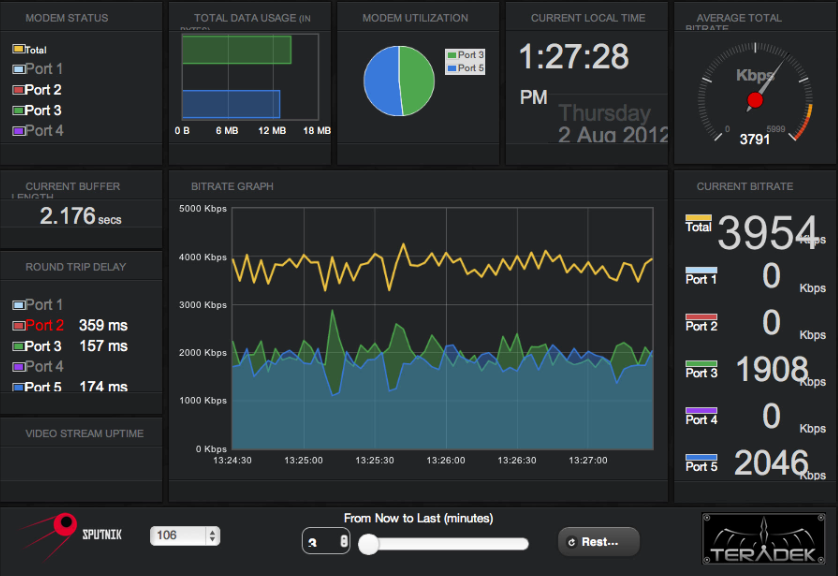Streaming Over 4G with Teradek Cube, Pt. 2: Testing Results
In Part 1 of this article, we looked at how to set up a live webcast over 4G with the Teradek Cube and the Bond 4G Cellular Transmitter. Now we'll look at the results of the testing with the setup we assembled.
I had just finished testing a single Verizon modem with the Livestream Broadcaster, which pushed a 1.6 Mbps stream with no problem. This, plus the fact that Cube will drop the data rate should the bandwidth not be able to support it, emboldened me to try to stream at 720p resolution at 4 Mbps. You can see out a video from the tests below; though I was hoping to download the file from Livestream and check the actual data rate, I was unable to do so. Note that the commentary starts about 56 seconds in.
720p30 streaming @ 4 Mbps
However, if you zoom the file to full screen (and ignore the smudge on the lens), you'll see that the video looks fantastic, even though the moving trees in the background complicate the scene. Around 3:30 into the video, I pulled one of the Verizon modems from the Bond unit to simulate network congestion. As mentioned, I couldn't download the file, so I can't tell how the Cube/Bond pair responded, but the stream kept coming. At full screen, it does appear that after I pulled the modem, my shirt got a bit more blocky, but it's not night and day, and I may be seeing it just because I'm looking for it.
I was frustrated by the lack of status information from either the Cube encoder or the associated software telling me that the bandwidth had dropped. On the Livestream Broadcaster and associated iPhone app, you do get warnings when the unit starts to have difficulty pushing out the compressed video data, a sign that bandwidth has dropped. I saw nothing similar on the Cube hardware or iPad app.
The Sputnik server itself does have a great status screen that you can see in Figure 2 (below), showing the three inputs and the total aggregated outbound data rate of 3.954 Mbps. However, I didn't have computer connectivity onsite and only saw this screen because I captured it via Camtasia on a computer in my office when I away testing. I guess all's well that end's well; the stream went through and looked great, even after I pulled the Verizon modem.

Figure 2. The Sputnik server's modem status screen.
Overall, if you have mission critical video that has to get through, you really shouldn't use a single 4G modem; if there's no service or the tower is congested, you're out of luck. Cellular bonding provides a higher-bitrate signal and more reliability.
Rather than buying a separate encoder/bonding unit, I recommend a matched pair, which gives you assured compatibility and the ability to adapt to changing conditions. While I haven't surveyed the field, the Teradek Bond/Cube combination are on the lower end of the price spectrum for these types of units and performed well in my tests, considering both latency and quality, and was relatively easy to use. The temporary lack of 360p output is the only significant red flag; if this isn't important to you, I would definitely place these units on your short list.
Related Articles
Teradek's rental program will immediately offer complete Bond packages, which include a Cube encoder, Bond unit, a managed Sputnik server, power accessories, and three 3G/4G modems with unlimited data from the customer's operators of choice
TeraCentral SDK provides Teradek customers with access to the Cube's live video stream, as well as low-level functions to encourage novel third-party solutions for a variety of wireless video applications
With the rise and increased penetration of 4G networks, live streaming over cellular is becoming more and more accessible. For this review, we tested the Teradek Cube encoder and Bond 4G cellular transmitter